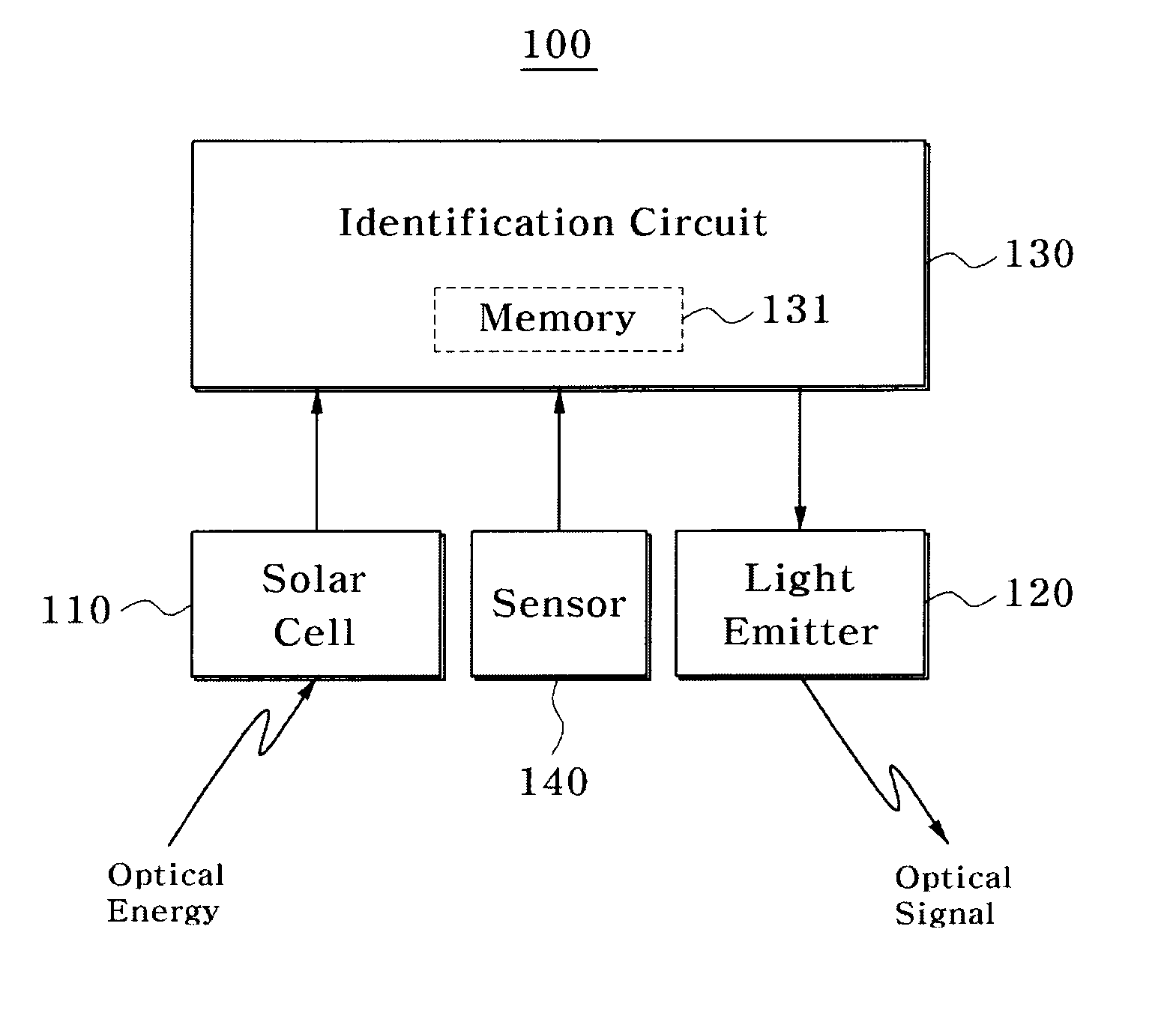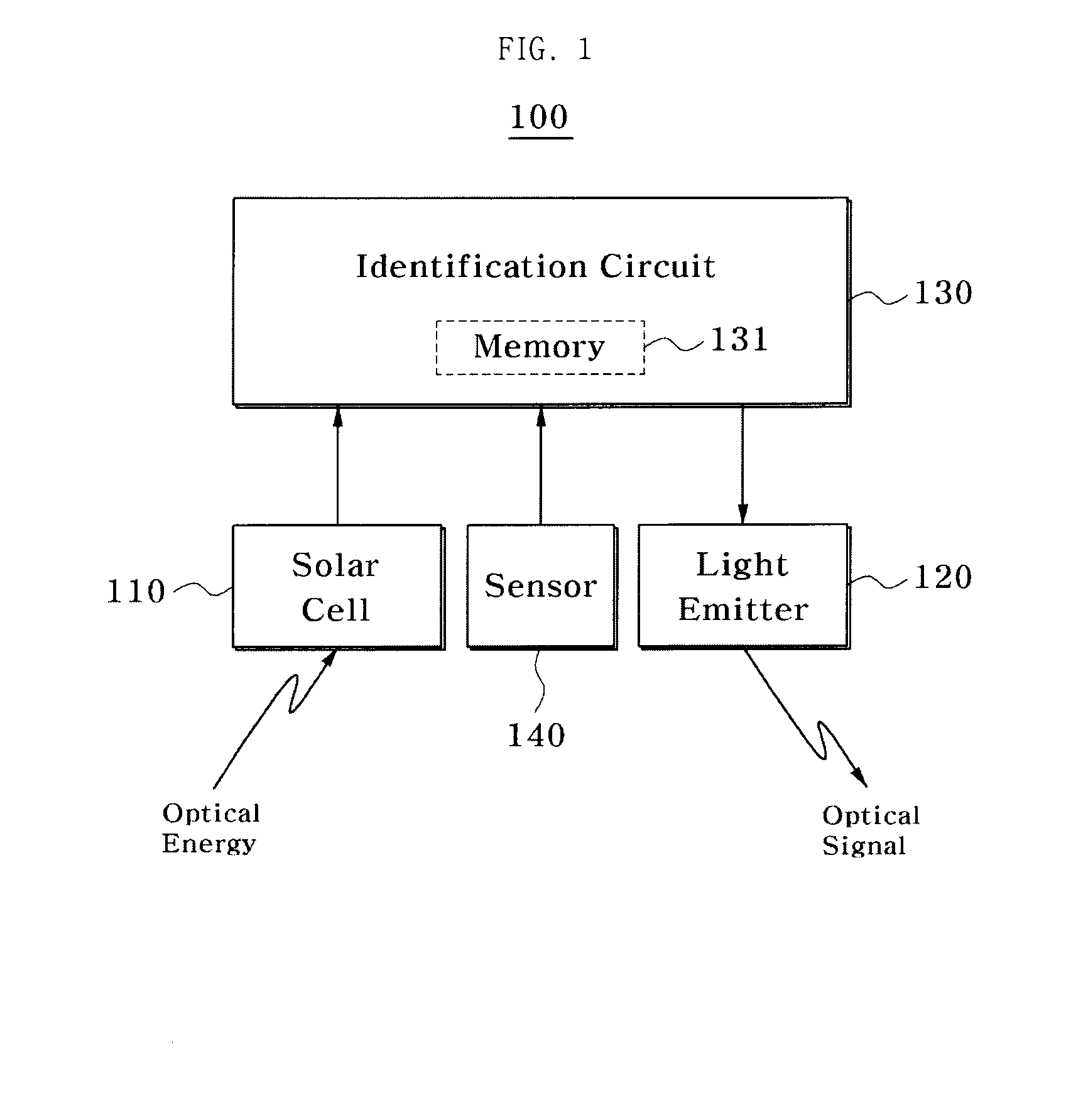Optical identification tag, reader and system
a technology of optical identification and reader, applied in the field of optical identification tags, a reader and a system, can solve the problems of limiting applications and the inability of rfid tags to apply to applications which require a very small-sized identification tag, and achieve the effect of simplifying the circuit configuration and significantly reducing the area of identification tags
- Summary
- Abstract
- Description
- Claims
- Application Information
AI Technical Summary
Benefits of technology
Problems solved by technology
Method used
Image
Examples
Embodiment Construction
[0025]The present invention will now be described more fully hereinafter with reference to the accompanying drawings, in which exemplary embodiments of the invention are shown. This invention may, however, be embodied in different forms and should not be construed as limited to the embodiments set forth herein. Rather, these embodiments are provided so that this disclosure will be thorough and complete, and will fully convey the scope of the invention to those skilled in the art. In the drawings, the thickness of layers and regions are exaggerated for clarity. Like numbers refer to like elements throughout the specification.
[0026]FIG. 1 illustrates an optical identification tag according to a first exemplary embodiment of the present invention. Referring to FIG. 1, an optical identification tag 100 includes a solar cell 110, a light emitter 120, and an identification circuit 130. The optical identification tag 100 may further include a sensor 140.
[0027]The solar cell 110 converts in...
PUM
 Login to View More
Login to View More Abstract
Description
Claims
Application Information
 Login to View More
Login to View More - R&D
- Intellectual Property
- Life Sciences
- Materials
- Tech Scout
- Unparalleled Data Quality
- Higher Quality Content
- 60% Fewer Hallucinations
Browse by: Latest US Patents, China's latest patents, Technical Efficacy Thesaurus, Application Domain, Technology Topic, Popular Technical Reports.
© 2025 PatSnap. All rights reserved.Legal|Privacy policy|Modern Slavery Act Transparency Statement|Sitemap|About US| Contact US: help@patsnap.com



